A skeletal figure draped in brightly colored robes is not what one usually pictures when asked to describe a Buddha, but the inhabitants of the villages surrounding Mt. Yudono in Yamagata Prefecture, Japan, would disagree. Several temples in the western half of the north part of Japan’s main island enshrine such emaciated, ostensibly grotesque figures as their principal object of worship and veneration. They are called sokushinbutsu, or “Buddhas in Their Very Body,” and are often referred to as self-mummified Buddhas. Traditionally they were understood to have entered a state of deep meditation rather than having died and were still capable of granting the prayers of their worshippers. The temple abbots do not see the sokushinbutsu as mummies in a traditional sense, as they are not preserved through embalming. These “embodied Buddhas” have preserved their spirits within their bodies by achieving enlightened consciousness and so are not completely dead.
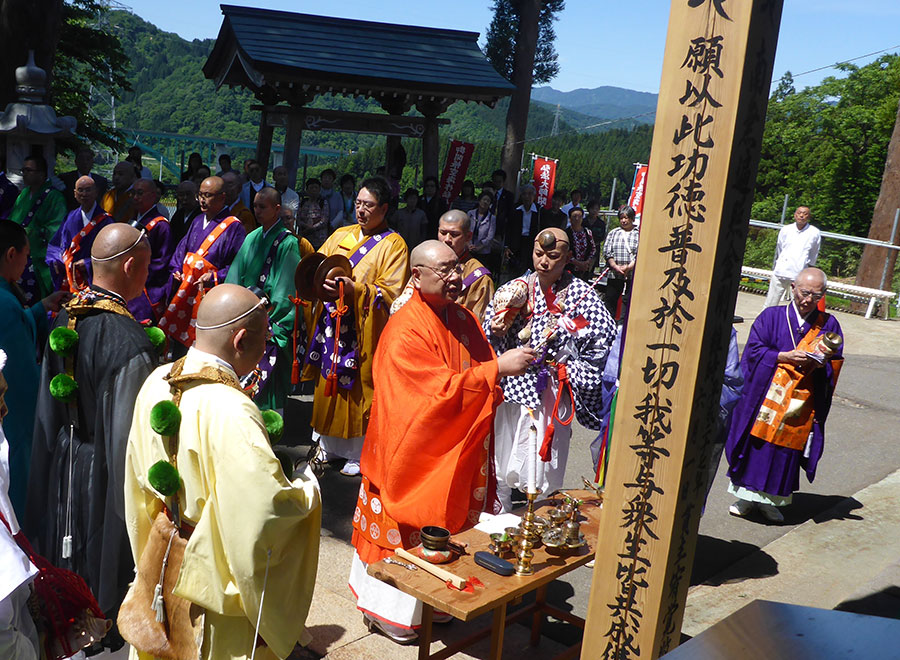
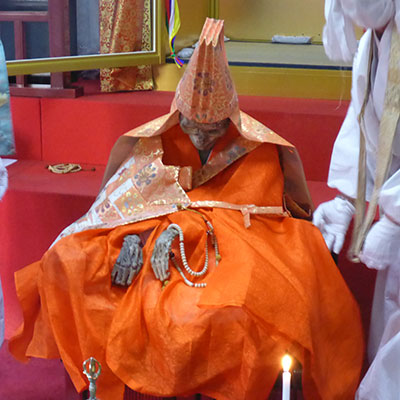
Twenty-one of these unique mummies still survive in Northern Japan, and nine more are known from historical records. The earliest surviving sokushinbutsu dates back to 1683, while the latest was buried to complete the mummification process in 1903. However, since the government criminalized the practice in the late 19th century, his body was not actually exhumed and enshrined until after World War II.
Mt. Yudono, Shugendo, and Shingon Buddhism
The self-mummified Buddhas of Northern Japan are all associated with the mountain ascetic religious tradition centered on Mt. Yudono, which is grouped together with two nearby mountains, Mt. Haguro and Mt. Gassan, as the Dewa Sanzan, or the Three Mountains of Dewa. Dewa is the traditional name for the northwestern province of Japan’s main island. Although the monks of Haguro persistently claimed dominance over all three mountains, Yudono’s temples maintained their own unique traditions. The ascetics, called yamabushi or shugenja, resided at these mountains and belonged to a tradition known as Shugendō, roughly translated as the Way of Ascetic Power. Shugendō synthesized elements of Daoism—the worship of indigenous Japanese deities—and esoteric Buddhism into a sophisticated and cohesive whole. Its adepts performed demanding austerities in the mountains, such as fasting, sutra recitation under ice-cold waterfalls, and other harsh activities in order to achieve personal enlightenment and supernatural powers that they could use to serve their patrons throughout Japan. To this day, the Dewa Sanzan region is home to many ascetics associated with this tradition, and large numbers of pilgrims visit the mountains every year, staying at special pilgrim lodges at the foot of Mt. Haguro.
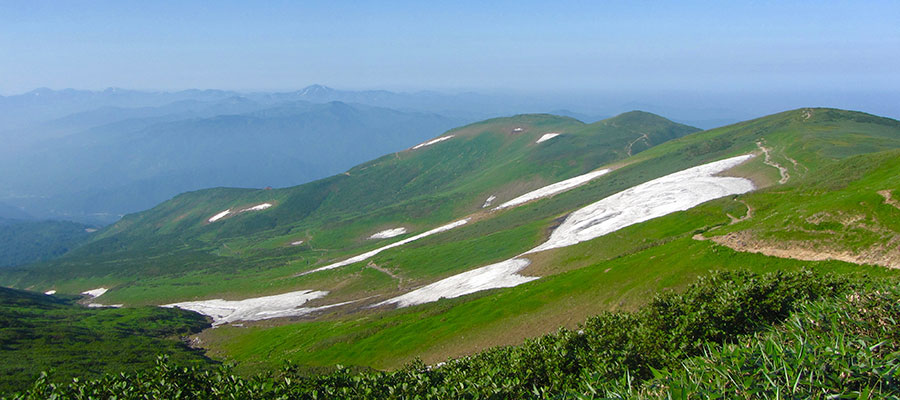
In contrast to Mt. Haguro, which came to be affiliated with the Tendai School in the 17th century, the four temples of Yudono tradition—Chūrenji, Dainichibō, Hondōji, and Dainichiji—were associated with the Shingon School of Buddhism. Consequently, Shingon thought was one of the major ideological influences behind the sokushinbutsu ideal. The Buddhist names given to all sokushinbutsu end with the Chinese character for ocean, pronounced “kai” in Japanese, in honor of Kūkai, the founder of the Shingon tradition in Japan, and according to local legend, the monk who inaugurated Yudono as a site of ascetic practice. Kūkai’s concept of attaining Buddhahood in one’s very own body, or sokushin jōbutsu, as opposed to in a future incarnation, is one of the foundational concepts behind the process, and Kūkai himself is said to still be in eternal meditation at Mt. Kōya, headquarters of the Shingon School. Yudono’s sokushinbutsu can be seen as following in his footsteps. Both Kūkai and Yudono’s self-mummified Buddhas are said to be remaining in this world in a state of deep meditation until Maitreya, the Future Buddha, descends from Tusita Heaven in the distant future.
Daoist ideas of self-perfection through a special dietary regime and prolonged confinement in the deep mountains were another crucial influence on the tradition of self-mummified Buddhas at Yudono. These practices and concepts spread to Japan from the Asian mainland early in Japanese history, shaping the development of the Shugendō tradition. Many monks retreated to the mountains, hoping to become a sennin, or immortal hermit endowed with supernatural abilities, including the legendary founder of Shugendō, En-no-gyōja.
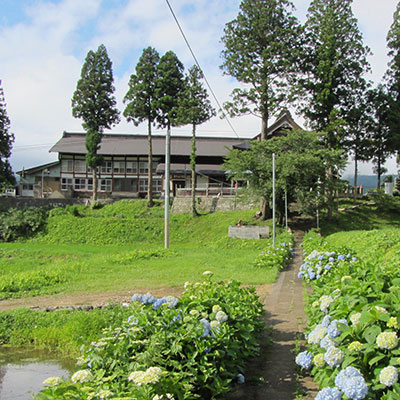
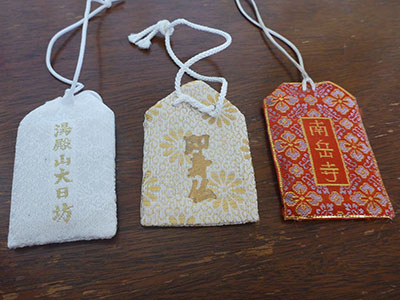
Eating Wood and Staying on the Mountain
Aspirants to sokushinbutsu status were required to dedicate themselves to two kinds of austerities, mokujiki-gyō, or “wood-eating austerities,” and sanrō, or mountain confinement. The ideal location for these practices was a region of Mt. Yudono called Sennin-zawa, or the Swamp of the Wizards. In addition to the more general monastic prohibitions on meat-eating and alcohol consumption, aspirants were supposed to adhere to a strict dietary regime. This demanded abstention from a group of grains commonly referred to as the “Five Cereals,” consisting of rice, wheat, soybeans, adzuki beans, and black sesame seeds. To this was added a set of five more plants: barnyard grass, millet, foxtail millet, buckwheat, and corn, making for a total of “Ten Cereals” forbidden to these ascetics. Instead, their diet consisted of nuts, roots, and pine bark. This dietary regime served the dual purpose of both enervating one’s worldly passions and depleting the ascetic’s body fat, preventing decomposition and facilitating easy mummification at the end of the process.
The second form of austerities required of sokushinbutsu was sanrō, or confinement within the mountain. Ascetics would seclude themselves upon Mt. Yudono for thousand-day intervals, some continuing for up to 4,000 days at a time. While residing in a designated lodge at Sennin-zawa, they would thrice daily perform cold water ablutions, then travel to the Yudono Shrine while reciting the Mahāvairocana Sutra. Enduring the cold winters at Sennin-zawa would have been extremely grueling, yet if they fell ill, they were not allowed to receive medical treatment or shirk their daily pilgrimages. Understandably, several would-be sokushinbutsu passed away during the process and were honored with stone monuments commemorating their efforts. Several sokushinbutsu did not immediately begin the mummification process after completing their confinement at Yudono, but they were still expected to follow the mokujiki-gyō dietary restrictions after leaving the mountain.

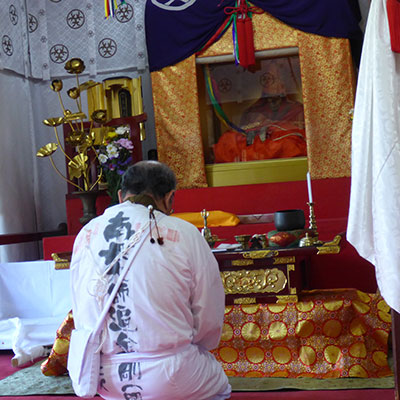
Once the prospective sokushinbutsu had completed both their “wood-eating” and mountain confinement austerities, they were placed in a wooden coffin and buried in the ground, with only a bamboo tube to allow them to breathe. Within this underground coffin, the ascetic would seem to pass away from starvation, but would actually achieve the state of dochū nyūjō, or “entering deep meditation within the earth.” After three years and three months, followers would exhume the ascetic, dress him in clerical robes, and enshrine him within a temple as its central object of veneration.
The Men Who Would Be Buddhas: The Lives of Sokushinbutsu
Men (women were not permitted) embarked upon the sokushinbutsu path for a variety of reasons. Shinnyokai shōnin, enshrined at the temple Dainichibō, for example, supposedly was a local farmer who accidentally spilled “night soil” (human feces collected at night and used for fertilizer) on a passing samurai. The farmer killed the samurai in the ensuing fight, and then sought sanctuary at Dainichibō, where he became a monk. Later, in an effort to alleviate the suffering caused by a terrible famine, he chose to become a sokushinbutsu. Another, Testumonkai shōnin, was traditionally held to have a killed a samurai in a fight over a prostitute, then sought refuge at the temple Chūrenji, eventually becoming a monk and working to become a sokushinbutsu. Tetsumonkai is credited with many meritorious acts. Once, while visiting the shogun’s capitol of Edo (now Tokyo), he saw that a terrible epidemic was afflicting its inhabitants, so he tore out his own eye as an offering to the deities of Yudono in order to persuade them to heal the plague’s victims.
Sokushinbutsu were said to possess both great motivation and great ability to help save people from various afflictions. The farmers of the Shōnai Plains region of Japan, where many of these sokushinbutsu originated, suffered from poor harvests, famines, and severe taxes throughout the Tokugawa Period (1600–1868), and the sokushinbutsu endured heavy privations in order to ameliorate the difficulties of their followers. When they achieved Buddhahood, they supposedly gained access to a vast reservoir of sacred power that their worshippers could draw upon for both worldly and salvific benefits.


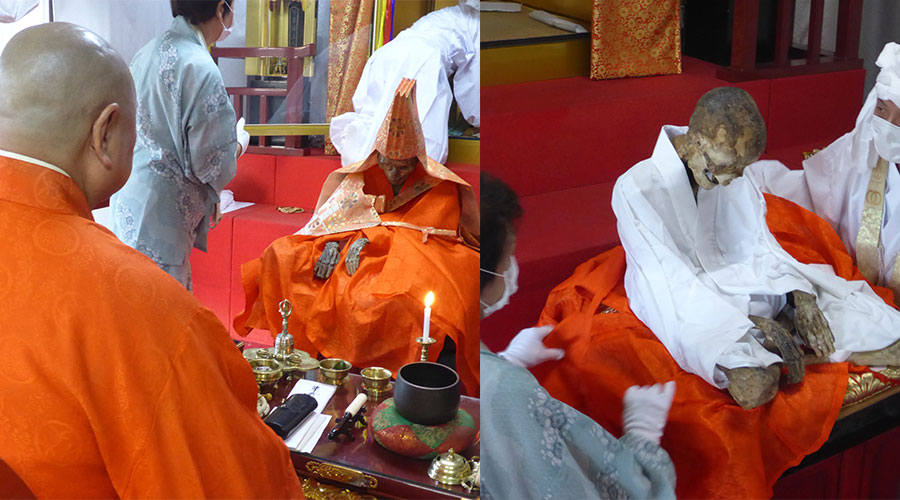
Sacred Redressing
Shinnyōkai Shōnin, disrobed for a redressing ceremony that takes place once every six years (twice a zodiac cycle). Dainichibō Temple, Ōami, Tsuruoka City, Yamagata Prefecture.

Frank W. Clements, Ph.D. received his doctorate from the Department of East Asian Languages and Civilizations at the University of Pennsylvania. Shayne Dahl is a Ph.D. candidate at the University of Toronto.
For Further Reading
Naitō, M. Nihon no miira shinkō. Kyoto: Hōzōkan, 1999.
